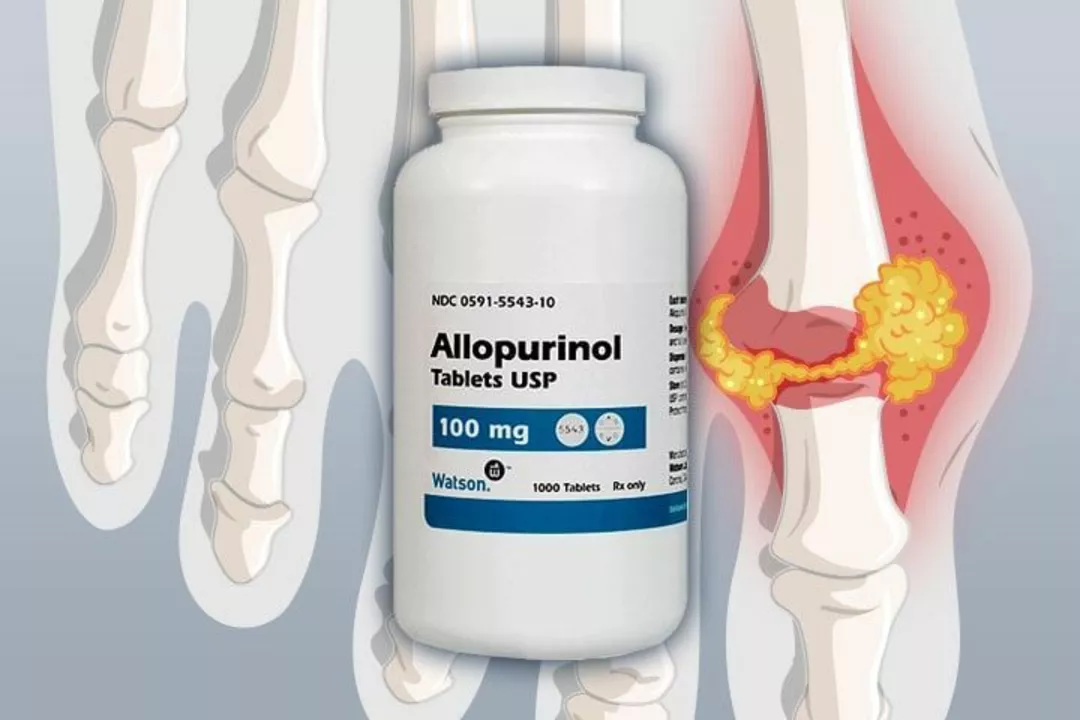Gout: Practical Tips to Spot, Treat, and Prevent Flare-Ups
Gout attacks often start at night and hit fast. One moment your toe feels fine; the next it's swollen, hot, and so painful you can’t bear a sheet on it. Gout is caused by uric acid crystals in a joint. Knowing quick steps to ease pain and simple long-term changes to prevent future attacks makes a big difference.
What to do during a gout attack
If you suspect gout, act fast. Rest the joint and keep it elevated. Apply ice for 10–20 minutes every few hours to cut pain and swelling. For most people, over-the-counter NSAIDs like ibuprofen or naproxen work well—use them unless your doctor advised against them. Colchicine and short courses of oral steroids are other options your doctor might prescribe if NSAIDs aren’t suitable. Call your doctor if pain is extreme, the joint looks infected, or you have fever.
Long-term control and medications
The goal is lowering uric acid to prevent crystals. Common long-term drugs are allopurinol and febuxostat; they reduce production of uric acid. If you have frequent attacks or tophi (bumps under the skin), your doctor will likely recommend one of these. It’s important not to stop or start uric-acid-lowering drugs during an attack without clear advice—doing so can worsen symptoms. Regular blood tests help keep the dose right.
Diet, drinks, and lifestyle that help: You don’t need a radical diet, but small, consistent changes help. Cut back on red meat, organ meats, shellfish, and sugary drinks—these raise uric acid. Alcohol, especially beer, often triggers attacks. Drink plenty of water and aim for gradual weight loss if you’re overweight; that lowers your risk. Low-fat dairy, vegetables, and whole grains are good choices that won’t hurt gout.
Simple preventive habits: Take medications as prescribed. Keep a symptom diary to spot triggers—note foods, drinks, and stress. Stay active with low-impact exercise like walking or swimming. Treat other health issues, such as high blood pressure, diabetes, and kidney problems, because they affect uric acid and gout risk.
When to see a specialist: If attacks happen more than once a year, you have tophi, or the disease affects multiple joints, ask for a rheumatology referral. A specialist can tailor treatment, check for side effects, and discuss advanced options like uricosuric agents or injectable therapies.
Quick checklist before you go:
- Rest and ice during an attack
- Use NSAIDs, colchicine, or steroids if advised
- Talk to your doctor about long-term therapy
- Cut back on alcohol, red meat, and sugary drinks
- Stay hydrated and lose weight gradually
If you need medicine, use a licensed pharmacy. Look for a physical address, pharmacist contact, and a valid prescription requirement. Beware of sites that sell without prescriptions or offer huge discounts—those can be fake. If unsure, call your local pharmacist or doctor before ordering. Keep copies of prescriptions and track delivery for your safety.
This is practical, no-nonsense advice you can use today. If you’re unsure about treatments or have other health issues, call your healthcare provider.

The Role of Allopurinol in Managing Gout and Hyperuricemia
As a gout sufferer, I've been researching different ways to manage the condition, and I came across Allopurinol. This medication is quite effective in reducing uric acid levels, which is the main cause of gout and hyperuricemia. It works by inhibiting an enzyme called xanthine oxidase, responsible for the production of uric acid in our bodies. By taking Allopurinol, I've noticed a significant improvement in my gout symptoms, and my flare-ups have become less frequent. I believe this medicine is a game-changer for people like me who struggle with gout and high uric acid levels.
